Delicious Shrimp and Corn Recipes to Savor
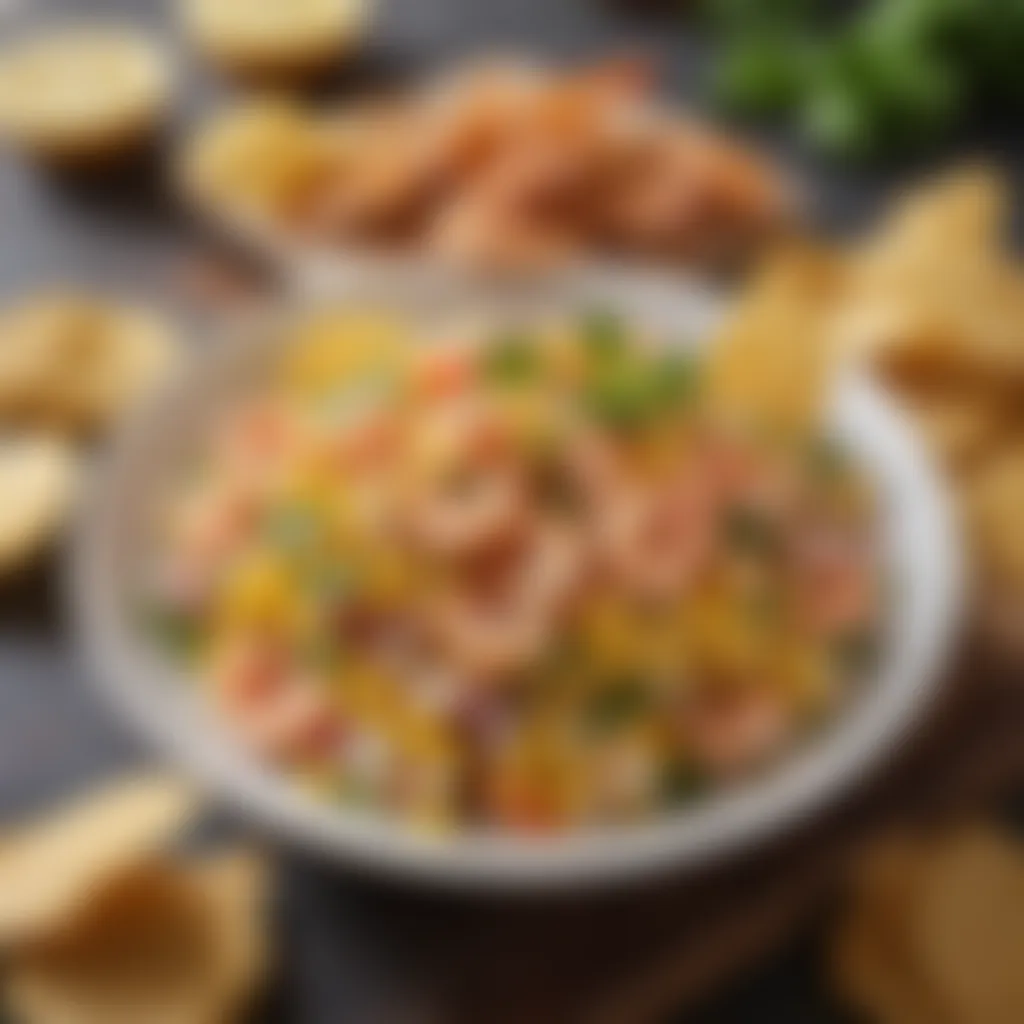
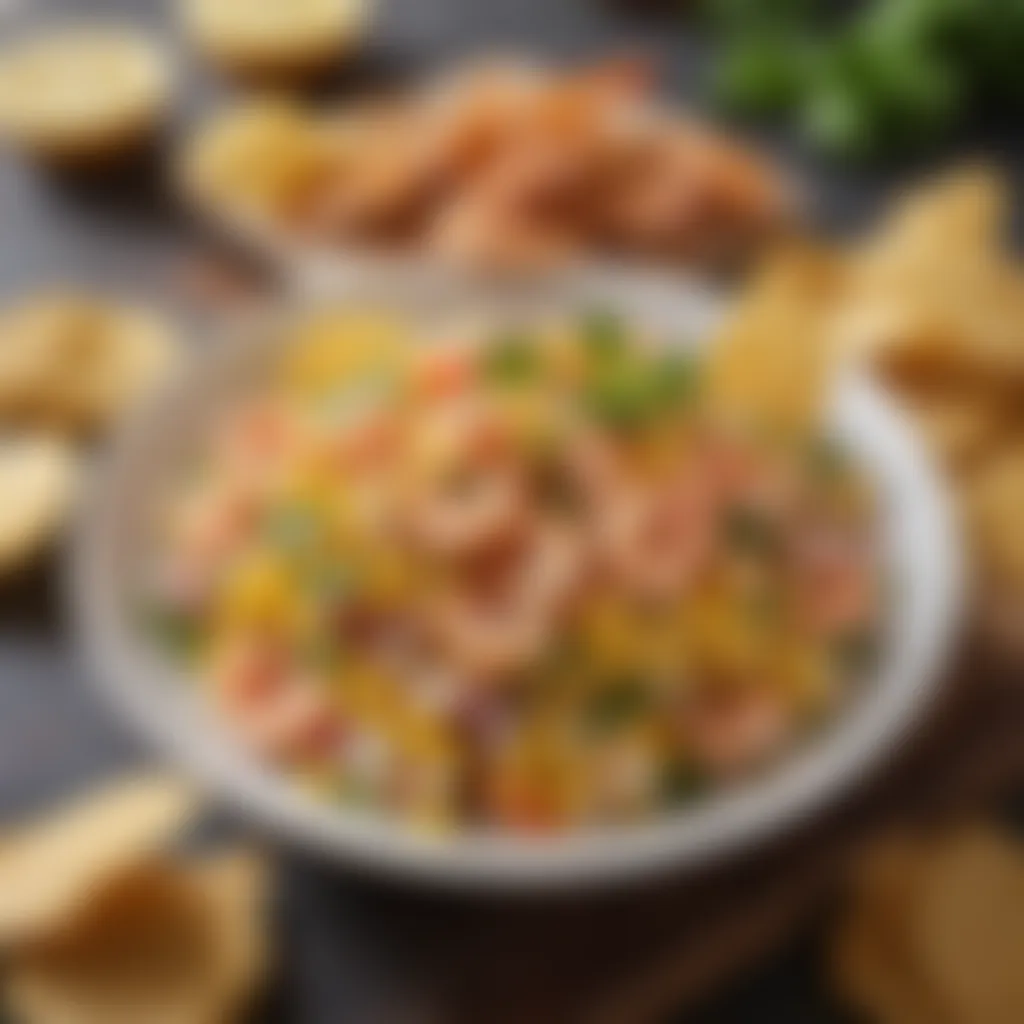
Intro
Shrimp and corn - two ingredients that are as complementary as peanut butter and jelly. Together, they create dishes that not only tantalize your taste buds but also serve up a feast for the eyes. This article explores a variety of delightful recipes that showcase the harmonious blend of these ingredients. Whether you’re new to cooking or have been whipping up gourmet meals for years, there’s something here for everyone. The aim is to elevate simple ingredients into exquisite dishes that can impress even the most discerning palates.
Ingredients:
To kick off this culinary journey, let’s gather everything you will need. Here’s a clear list of ingredients along with exact measurements for two classic recipes that feature shrimp and corn:
For Shrimp and Corn Chowder:
- 1 pound of large shrimp, peeled and deveined
- 1 cup of fresh corn kernels (or frozen, if that's what you’ve got)
- 2 medium potatoes, diced
- 1 onion, finely chopped
- 2 cloves of garlic, minced
- 4 cups of seafood or chicken broth
- 1 cup of heavy cream
- 2 tablespoons of olive oil
- Salt and pepper to taste
- Fresh parsley for garnish
For Spicy Shrimp and Corn Tacos:
- 1 pound of shrimp, peeled and deveined
- 1 cup of sweet corn
- 4 small tortillas (corn or flour)
- 1 teaspoon of chili powder
- 1/2 teaspoon of cumin
- 1 avocado, sliced
- 1 lime, juiced
- 2 tablespoons of fresh cilantro, chopped
- Salt to taste
Preparation Steps:
With your ingredients gathered, it’s time to roll up your sleeves and get cooking. The steps outlined below provide a clear roadmap for creating both the chowder and the tacos, ensuring your culinary adventure is smooth sailing.
For Shrimp and Corn Chowder:
- Sauté the Aromatics: In a large pot, heat the olive oil over medium heat. Add the chopped onion and cook until translucent, about 3-4 minutes. Add the minced garlic and continue cooking for another minute until fragrant.
- Cook the Potatoes: Add the diced potatoes to the pot, then pour in the broth. Bring to a boil, then reduce to a simmer for 15-20 minutes until the potatoes are tender.
- Incorporate Corn and Shrimp: Stir in the corn and shrimp, adjusting the heat to simmer until the shrimp are pink and cooked through, about 5 minutes. Finally, pour in the heavy cream and stir well. Season with salt and pepper to taste.
- Serve: Ladle the chowder into bowls and garnish with fresh parsley.
For Spicy Shrimp and Corn Tacos:
- Marinate the Shrimp: In a medium bowl, combine shrimp, chili powder, cumin, and salt. Toss to coat the shrimp evenly and let it marinate for about 10 minutes.
- Cook the Shrimp: Heat a skillet over medium-high heat. Add the marinated shrimp and cook for 3-4 minutes until shrimp are pink and opaque.
- Warm the Tortillas: Heat the tortillas in another dry skillet for about 30 seconds on each side.
- Assemble the Tacos: Place shrimp and corn in each tortilla. Add avocado slices, drizzle with lime juice, and sprinkle cilantro on top.
Technical Aspects:
Understanding some technical elements of cooking can significantly enhance your dishes. Here are some important aspects to keep in mind:
- Temperature Settings: For the chowder, medium heat allows the ingredients to cook evenly without burning. A high flame for the tacos is essential to get that quick sear on the shrimp.
- Timing Specifications: Timing can make or break a dish. In the chowder, ensuring the shrimp cook just until opaque keeps them tender. For the tacos, don’t overcook the shrimp or they’ll turn rubbery.
Cooking Process:
When everything is well-prepared, follow these sequential steps for both recipes:
- Start with the chowder, allowing the flavors to meld beautifully as they simmer. The creaminess will create a comforting texture that warms the soul.
- Transition to the tacos, highlighting the vibrant, fresh flavors of shrimp and corn. Each bite should burst with flavor, and the crunch of the tortillas complements the softness of the fillings.
Troubleshooting Tips:
In the kitchen, things don’t always go as planned. Here are a few common mistakes and how to fix them:
- Overcooking Shrimp: If your shrimp end up too tough, you may have cooked them too long. Ensure you check for doneness by their color—pink means they’re done.
- Lack of Flavor: If the chowder tastes flat, a pinch of salt or a splash more of lemon or lime can wake up those muted flavors.
- Corn Sticking: If corn begins to stick or burn while cooking, lower the heat and add a splash of water to loosen up the bits stuck to the pan.
Cooking is about experimentation! Don’t shy away from tweaking recipes to match your preferences.
In the end, creating shrimp and corn dishes opens up a world where flavors collide and aesthetics reign supreme. So grab those ingredients and dive into the art of cooking, where every meal is a journey.
The Allure of Shrimp and Corn
Shrimp and corn together create a symphony of taste that is hard to resist. This duo not only tantalizes our palates but also has deep culinary roots that many of us appreciate, whether we’re whipping up a weeknight dinner or prepping for a special occasion. Shrimp, with its delicate sweetness, pairs beautifully with the crisp, buttery flavor of fresh corn. Together, they form a base for countless dishes, each one highlighting their individual charm while enhancing each other’s flavors. The allure of shrimp and corn lies in their simplicity but also their versatility, making a meal appealing for both casual family gatherings and elaborate feasts.
Culinary Significance
In the realm of cooking, shrimp is often celebrated for its quick cooking time and high protein content, making it a popular choice for busy households. It’s a versatile seafood that can easily absorb flavors, which means it fits well into a wide range of cuisines. From spicy Cajun dishes to creamy risottos, shrimp has no trouble slipping into varied recipes. Corn, on the other hand, is not just a staple in many cultures but also brings a delightful crunch and sweetness to the table. Its nutritional value, paired with the proteins found in shrimp, provides a balanced meal that is both satisfying and nourishing.
The culinary significance of this combination extends to its adaptability in various cooking techniques. Grilling, boiling, or sautéing shrimp can enhance its texture, whereas corn can be roasted, steamed, or even used in salsas or chowders. From a practical perspective, these two ingredients are often readily available, whether fresh or frozen, making them accessible for home cooks of any level.
"Combining shrimp and corn is an invitation to explore flavors and textures that are both exciting and comforting, appealing to a wide audience."
Cultural Pairings
When we think of shrimp and corn, the mind often wanders to the Southern United States, where dishes like shrimp and grits or corn pudding have long held a place of honor on the dining table. But this pairing stretches far beyond regional cuisines. For example, in Latin American cooking, shrimp and corn corn can be seen in dishes such as ceviche and elote, both of which showcase the natural sweetness of these ingredients while adding a punch of spices.
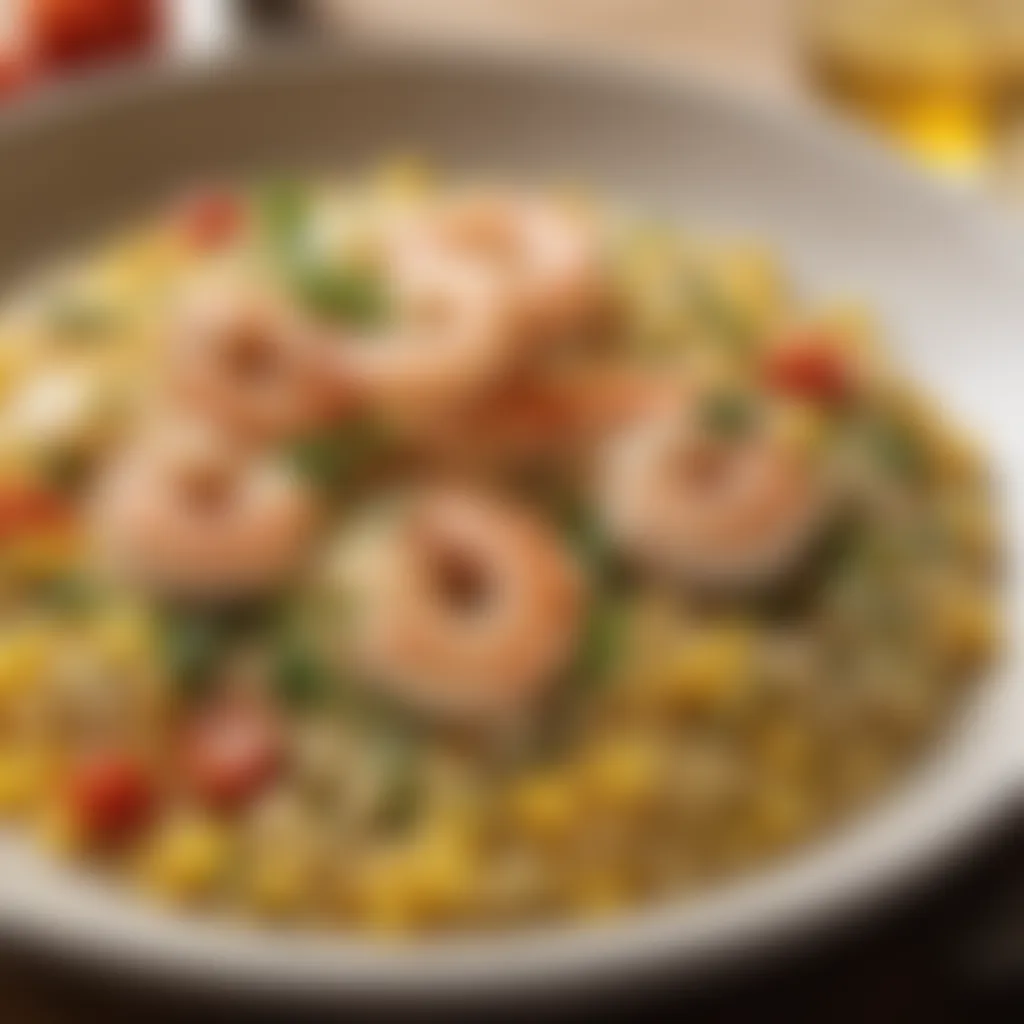
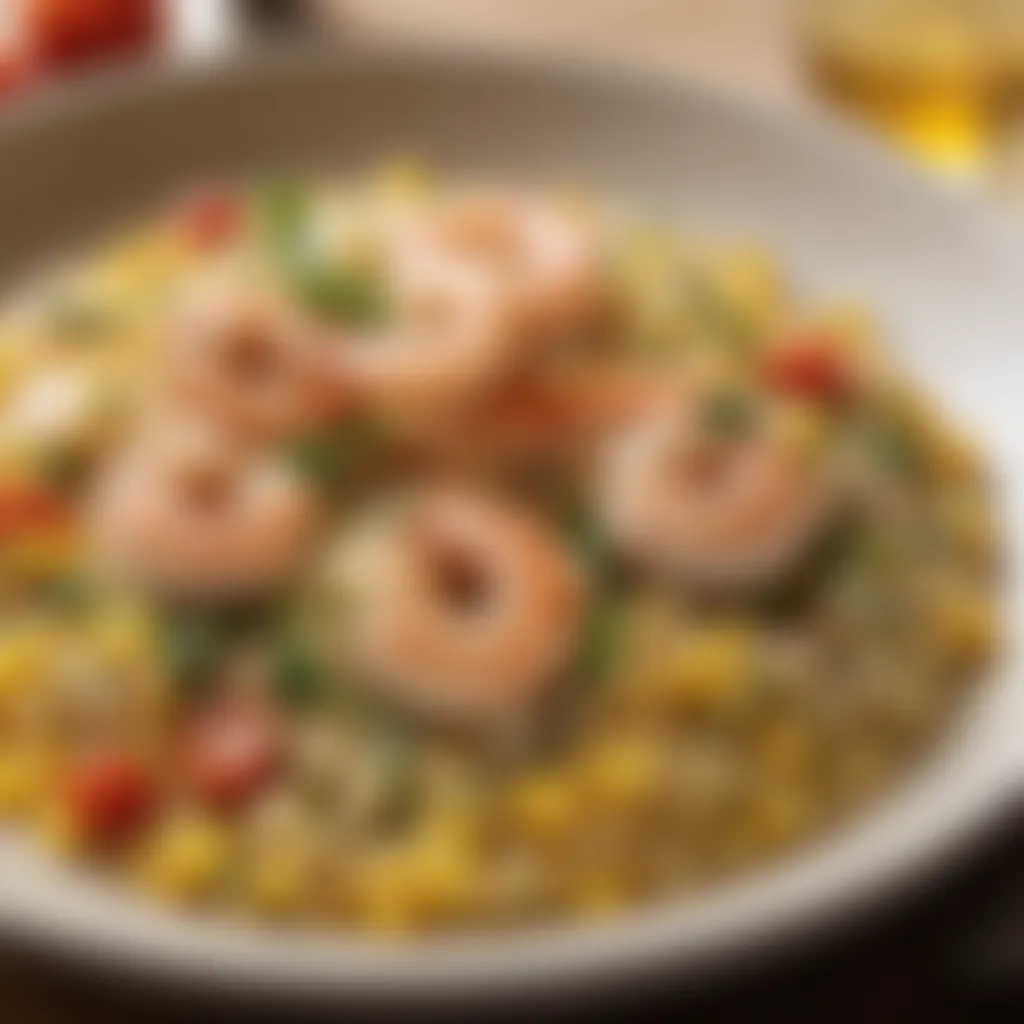
Adding to the cultural richness of shrimp and corn is their presence in many traditional stews and chowders. They traverse borders, with variations appearing in Asian food, where shrimp might be tossed with corn in a stir-fry or served in dumplings. The diversity of methods shows how adaptable these two ingredients can be.
This cultural relevance makes shrimp and corn not just meal components but a bridge to shared experiences and memories, forming a unique connection with food enthusiasts worldwide. As you delve deeper into creating meals with shrimp and corn, you’ll discover the stories and traditions that each dish can carry, enriching your dining experience.
The Versatility of Shrimp
Shrimp is one of those magical ingredients that can truly transform a dish from ordinary to extraordinary. Its adaptability in various cuisines makes it a crucial element in crafting shrimp and corn recipes. When we think about shrimp's place in the culinary world, we find that it pairs beautifully with many flavors and can be cooked using a range of techniques. All these qualities give it a unique position in kitchens across the globe.
Types of Shrimp
Wild-Caught vs. Farmed
When choosing shrimp, one stands at the crossroads of wild-caught and farmed options. Wild-caught shrimp, as the name implies, are caught in their natural habitats. These shrimp tend to have a firmer texture and a slightly better flavor profile. Many chefs and home cooks alike swear by them for their unique, sometimes briny, taste that can transport you straight to the ocean.
On the flip side, we have farmed shrimp, which are reared in controlled environments. The taste can sometimes vary; depending on the feed they consume. They can often be more affordable and readily available. However, it is essential to consider the ethical implications surrounding some farming practices.
In this article, wild-caught shrimp might be favored for their superior flavor, but it helps to keep an open mind about farmed shrimp's benefits, particularly when it comes to sustainability and cost.
Fresh vs. Frozen
The choice between fresh and frozen shrimp is pivotal when planning your cooking adventure. Fresh shrimp, often showcased at local fish markets, offers a delightful sweetness and tenderness. However, they may come with a higher price tag and limited shelf life.
Conversely, frozen shrimp can be very convenient. They are often flash-frozen shortly after being caught, retaining much of their quality. This makes frozen shrimp a reliable option for those whose schedules don’t always align with fresh seafood availability. A bit of knowledge can go a long way here: some shrimp might lose a bit of texture after thawing, yet when prepared correctly, they can taste almost as fresh.
Cooking Techniques
Grilling
Grilling is one of the most beloved methods for preparing shrimp, particularly in outdoor gatherings. The high heat caramelizes the sugars in the shrimp, leading to a beautiful, slightly charred outer crust. This method also allows other flavors, like marinades and seasonings, to meld beautifully with the shrimp's natural taste. Grilled shrimp adds that delightful smoky flair that elevates any dish.
Nevertheless, caution is crucial. Overcooking can quickly lead to a rubbery texture, so keeping an eye on the shrimp as they cook is essential.
Sauteing
Sauteing shrimp combines speed with incredible flavor. This technique involves cooking the shrimp quickly in a hot pan, often with some oil and aromatics. This quick cook allows them to retain moisture while absorbing flavors from other ingredients, such as garlic or fresh herbs, resulting in delicious bites. Sauteed shrimp can serve as an impressive centerpiece for any dish.
However, do keep in mind to not overcrowd the pan, or the temperature will drop, resulting in steamed rather than seared shrimp.
Boiling
Boiling is often overlooked, yet it can be an effective way to prepare shrimp, especially for those who prefer a lighter taste. This method is straightforward and can yield moist shrimp that are easy to integrate into dishes like salads or casseroles. When boiling, adding seasonings to the water enhances the shrimp's flavor significantly. A key consideration here is the timing; too long in boiling water, and they become tough.
"Selecting the right method of cooking shrimp may dramatically change the flavor and texture of the dish. Care should also be taken to not overdo it, regardless of the technique."
In summation, the versatility of shrimp—whether it be the types available or the various cooking methods—contributes significantly to the brilliance of shrimp and corn recipes. Understanding these elements allows one to embrace creativity in the kitchen while making informed decisions about the ingredients.
Exploring Corn’s Rich Textures
Corn is not just a staple in many households; it’s a fundamental ingredient that plays a critical role in a variety of delicious shrimp recipes. Understanding the unique textures and flavors that different varieties of corn bring to the table can elevate your culinary creations. The nuances offered by corn complement shrimp in remarkable ways, providing a delightful contrast to the tender meat of the shrimp.
Incorporating the right type of corn can enhance a dish’s visual appeal and texture, allowing for a more satisfying gastronomic experience. Whether you’re preparing a creamy chowder or zesty tacos, the inclusion of rich corn textures offers a flavorful foundation that enriches the entire dish.
Varieties of Corn
Sweet Corn
Sweet corn, often enjoyed fresh off the cob, is known for its crispness and sugary flavor. This variety provides a delightful burst of sweetness that pairs beautifully with the natural savory flavors of shrimp. The juicy kernels of sweet corn add textural variation to dishes, making each bite enjoyable.
One key characteristic of sweet corn is its high sugar content, which gives it that dessert-like quality. This makes it a popular choice for shrimp recipes where a touch of sweetness balances savory and spicy ingredients. However, the fleeting seasonality of fresh sweet corn means it must be used promptly to capture its peak flavor. Thus, utilizing frozen sweet corn can also be a practical choice, ensuring the sweetness is preserved.
"Sweet corn’s delightful crunch and sweet flavor is a gamechanger in shrimp dishes."
Field Corn
Field corn, on the other hand, serves a different culinary purpose. Primarily used for livestock feed and processed products, field corn possesses a starchy and less sweet flavor profile. While it might not seem as appealing for fresh recipes, it can be transformed into cornmeal or grits, vital components in certain shrimp preparations.
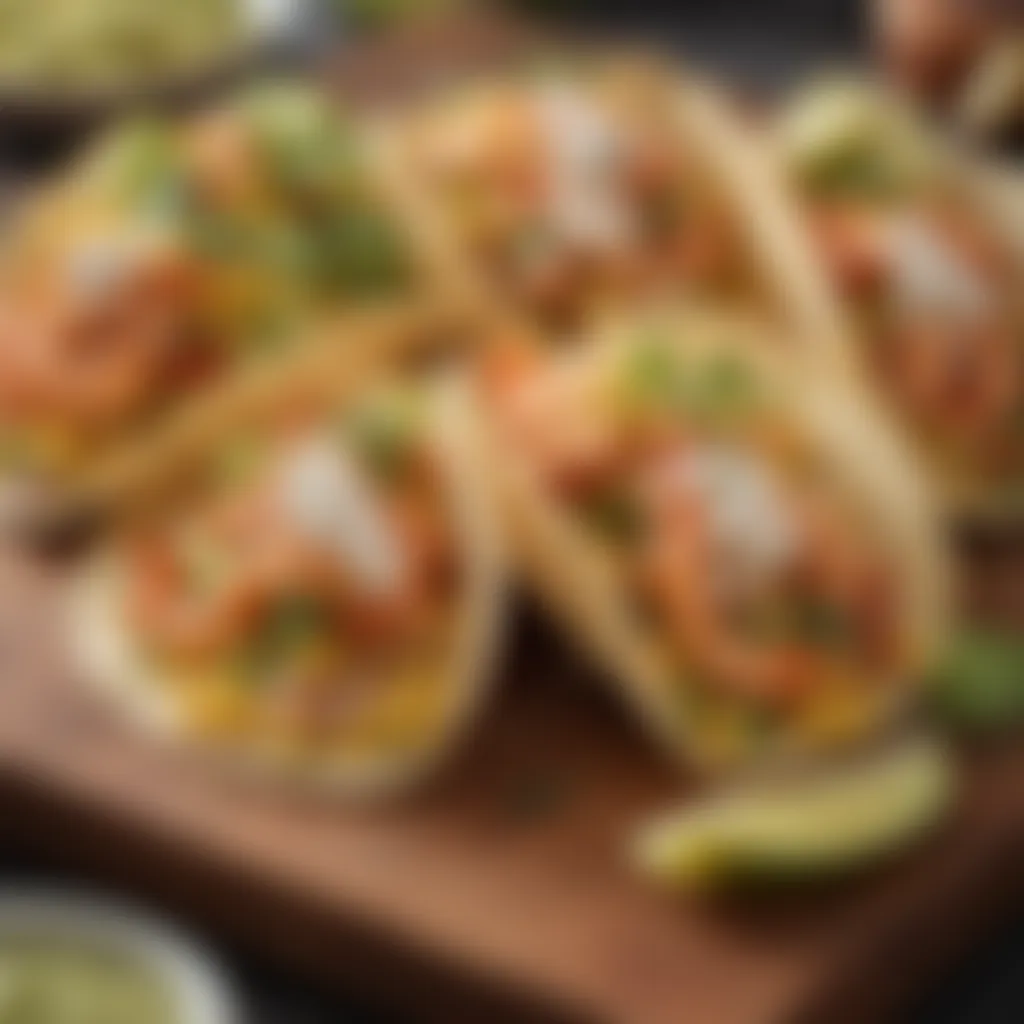
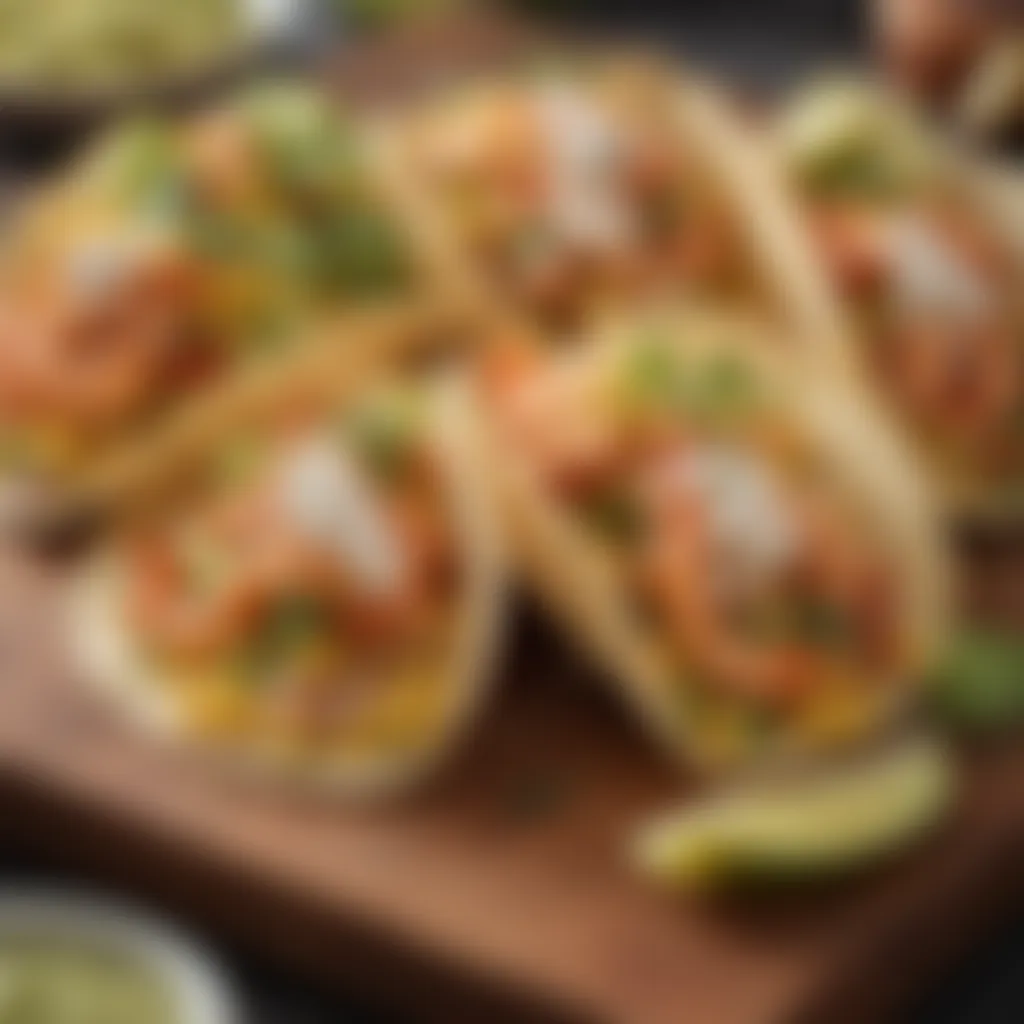
What sets field corn apart is its sturdiness—a characteristic that provides a satisfying texture when incorporated into heavier recipes. Though it may not boast the bright flavors of sweet corn, its versatility in cooking can provide ample sustenance and complement the richness of shrimp in a chowder or casserole. However, it’s essential to note that its seasonal availability may vary, and access to certain products could limit options.
Cultivation Practices
Organic vs. Conventional
When considering corn varieties for your shrimp dishes, one must also weigh the merits of organic and conventional cultivation practices. Organic corn, grown without synthetic fertilizers and pesticides, often embodies a more robust flavor and may boast a richer nutrient profile. This practice aligns with many health trends, becoming a favorable choice among concerned cooks.
On the flip side, conventional corn has undergone agricultural advancements, resulting in higher yields and lower costs. While conventional varieties may not carry the same organic certification, they are widely available and provide a practical option for many recipes. Therefore, depending on your cooking philosophy and desired end product, either type could serve your needs effectively.
Seasonal Availability
The timing of when specific types of corn become available can impact your recipe choices significantly. Seasonal availability ensures you’re selecting the freshest ingredients, which can drastically alter the dish’s flavor profile. Sweet corn, for example, tends to peak in summer, bursting with flavor when harvested at just the right moment.
Conversely, field corn is harvested later in the year. This means that while sweet corn might be a staple in summer dishes, field corn could serve well in heartier, fall-inspired meals. Understanding the different seasonal cycles of these corns allows chefs to plan meals that celebrate the best flavors of each season. If you aim to impress with your shrimp and corn dishes, timing can be everything.
Using this knowledge about corn’s varieties, cultivation practices, and seasonal availability, you can thoughtfully create shrimp recipes that appeal to the senses while ensuring each element contributes to the overall culinary experience.
Remember to select your corn based on intended flavors and textures, considering how they will interplay with the shrimp in your dish.
Harmonizing Flavors
Achieving a perfect harmony of flavors is pivotal in crafting shrimp and corn dishes that leave a lasting impression. When these two key ingredients are combined thoughtfully, they can elevate each other and create a symphony of taste that entices the palate. The interplay between flavors not only enhances the dish but also ensures a delightful experience for anyone who partakes in it. When considering what goes into your culinary creation, it's essential to think about specific elements such as complementary ingredients, textures, and visual aspects. Understanding how these factors work together can significantly enhance the overall dining experience.
Complementary Ingredients
Herbs and Spices
Herbs and spices serve as the backbone of flavor enhancement. Their ability to bridge and elevate the natural sweetness of shrimp and the hearty essence of corn makes them indispensable in many recipes. Fresh herbs like cilantro or parsley can introduce a bright, zesty touch, while spices such as paprika or cumin can add a warm undertone. A key characteristic of herbs and spices is their versatility; they can transform a dish from mundane to spectacular with just a sprinkle.
They not only contribute flavor but also bring in freshness, which is highly beneficial for our target audience - those looking to impress families or guests without spending an eternity in the kitchen. However, it’s worth noting that the careful balance is crucial; too much spice can easily overwhelm the nuanced flavors of shrimp and corn.
Citrus Accents
Citrus accents bring a crisp, refreshing zing that brightens up the richness of shrimp and the earthiness of corn. Ingredients like lemon zest or lime juice can quickly bring life to a dish, cutting through fats and introducing a burst of flavor. The distinctive feature of citrus is its acidity, which not only enhances taste but also serves to balance out. This dynamic aspect makes it a popular choice for many chefs and home cooks alike. Implementing citrus can accentuate the sweetness of corn while offering a needed contrast to shrimp’s textures. Althought, one must tread lightly; too much acidity can dominate the dish, leading to a one-dimensional flavor profile.
Balancing Textures
Crisp vs. Tender
Texture plays a crucial role in the enjoyment of food; it’s not just about taste but also how it feels in our mouths. The contrast of crisp and tender textures can create an engaging sensory experience. For instance, pairing tender shrimp with a crisp corn fritter or a salad featuring toasted corn adds not just variety but excitement to the dish. This interplay between textures adds depth; the contrasting crunch against the soft shrimp complements the overall experience beautifully. Opting for a balance in textures provides a well-rounded meal, making it more appealing on different levels. However, it's essential to ensure that the crisp elements don’t overshadow the more delicate textures of the shrimp.
Smooth vs. Chunky
The choice between smooth and chunky can significantly influence both the presentation and the eating experience. A creamy shrimp and corn chowder offers that inviting warmth and comfort, while a chunky shrimp and corn salad delivers a vibrant, fresh experience. Smooth textures bring a sense of luxury, often perceived as rich and indulgent. In contrast, chunkiness embodies freshness and a more rustic feel, perfect for summer gatherings. Exploring this balance of smooth versus chunky can help tailor the dishes to fit the seasonal themes or specific gatherings, enhancing their appeal. However, finding the right match based on occasion and preferences is crucial—for some, a creamy texture can feel too heavy, while others may crave the fresh bite of chunky elements.
Signature Shrimp and Corn Recipes
In the culinary world, shrimp and corn are a duo that is hard to beat. They are not just versatile ingredients; they are symbols of comfort, warmth, and satisfaction when brought together in a dish. The beauty of signature shrimp and corn recipes lies in their ability to highlight the distinct flavors of each element while creating a harmonious mix that leaves taste buds dancing.
These recipes can be simple or sophisticated, catering to various occasions from a casual gathering to a festive celebration. When you serve a dish like shrimp and corn chowder or spicy shrimp and corn tacos, you’re not just offering food; you’re providing an experience that invites conversation and appreciation.
Benefits of Signature Shrimp and Corn Recipes
- Flavor Harmony: Shrimp has a sweet, delicate taste that pairs wonderfully with the subtle sweetness of corn. The two create a balance that enhances every bite.
- Nutritional Value: Both shrimp and corn are packed with nutrients. Including them in your diet can provide high-quality protein along with essential vitamins and minerals, making these dishes not just delightful but also wholesome.
- Creative Flexibility: The simplicity of these ingredients allows for endless creativity. You can adjust spices, add vegetables, or experiment with cooking methods to suit your preference.
- Ease of Preparation: Whether you’re a busy housewife or an ambitious chef, these recipes generally don’t require an arsenal of ingredients or long hours in the kitchen.
Shrimp and Corn Chowder
Shrimp and corn chowder is a cozy dish that warms the heart and soul. To make this chowder, begin by sautéing some onions and garlic in a heavy-bottomed pot until they are translucent. Add fresh corn, diced potatoes, and shrimp; let them mingle with vegetable or seafood stock. Simmer until the potatoes are tender, then stir in cream for a rich texture. Finish with herbs like thyme and a squeeze of lemon for brightness. It’s the perfect dish for a chilly evening, offering both comfort and satisfaction.
Grilled Shrimp and Corn Salad
A vibrant grilled shrimp and corn salad brings a bit of summer to your table, no matter the season. By mixing fresh ingredients, you create a delightful medley of flavors: charred shrimp, sweet corn, and a hint of smokiness from the grill. To prepare, marinate the shrimp in olive oil, garlic, and lime juice, then grill alongside corn on the cob until perfectly charred. Toss them over a bed of mixed greens with avocado slices and a light vinaigrette. Not only is this salad refreshing, but it also boasts a beautiful presentation.
Spicy Shrimp and Corn Tacos
For those who enjoy a kick in their meal, spicy shrimp and corn tacos hit the spot. Start by seasoning shrimp with chili powder, cumin, and a dash of cayenne for that perfect heat. Sauté until they are pink and firm. Warm up corn tortillas, then fill them with shrimp, grilled corn, shredded cabbage, and a drizzle of lime-infused crema. The layers of flavor in these tacos are sure to impress anyone at your dinner table.
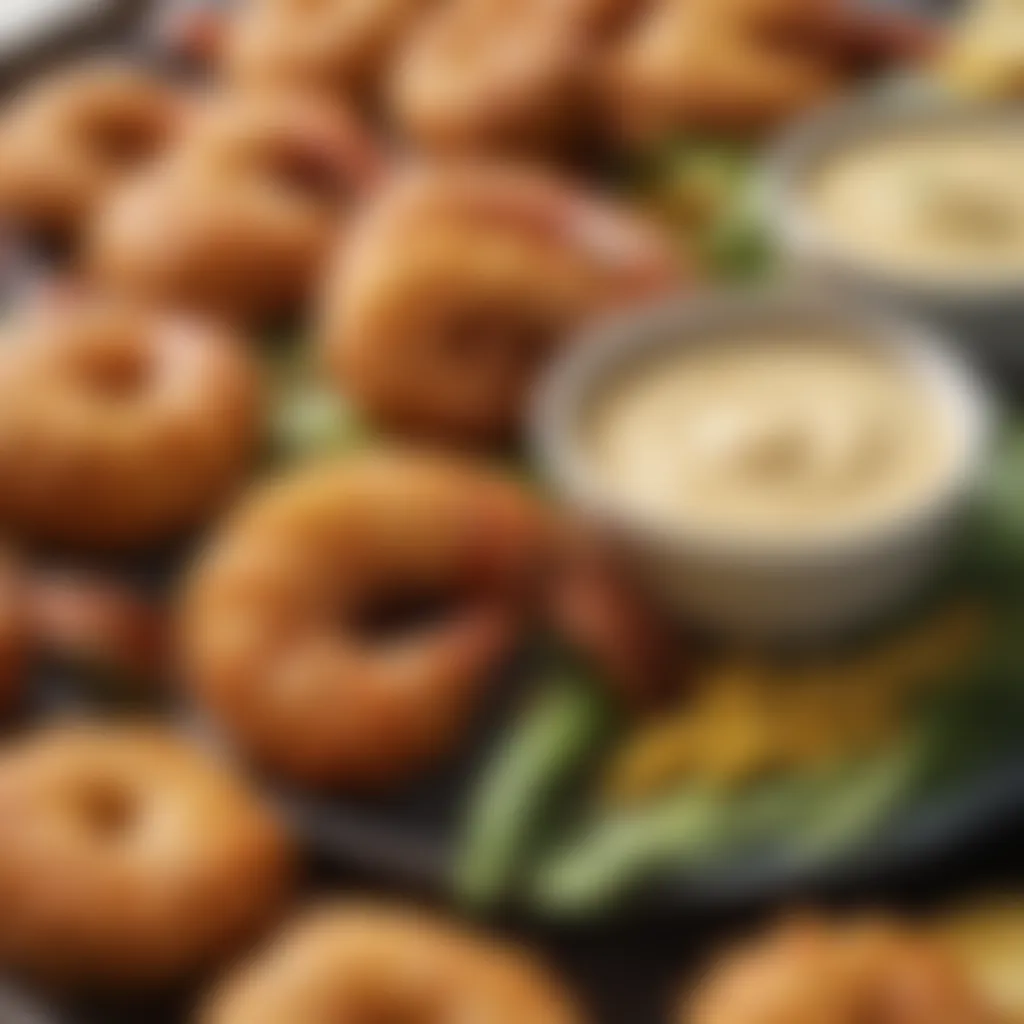
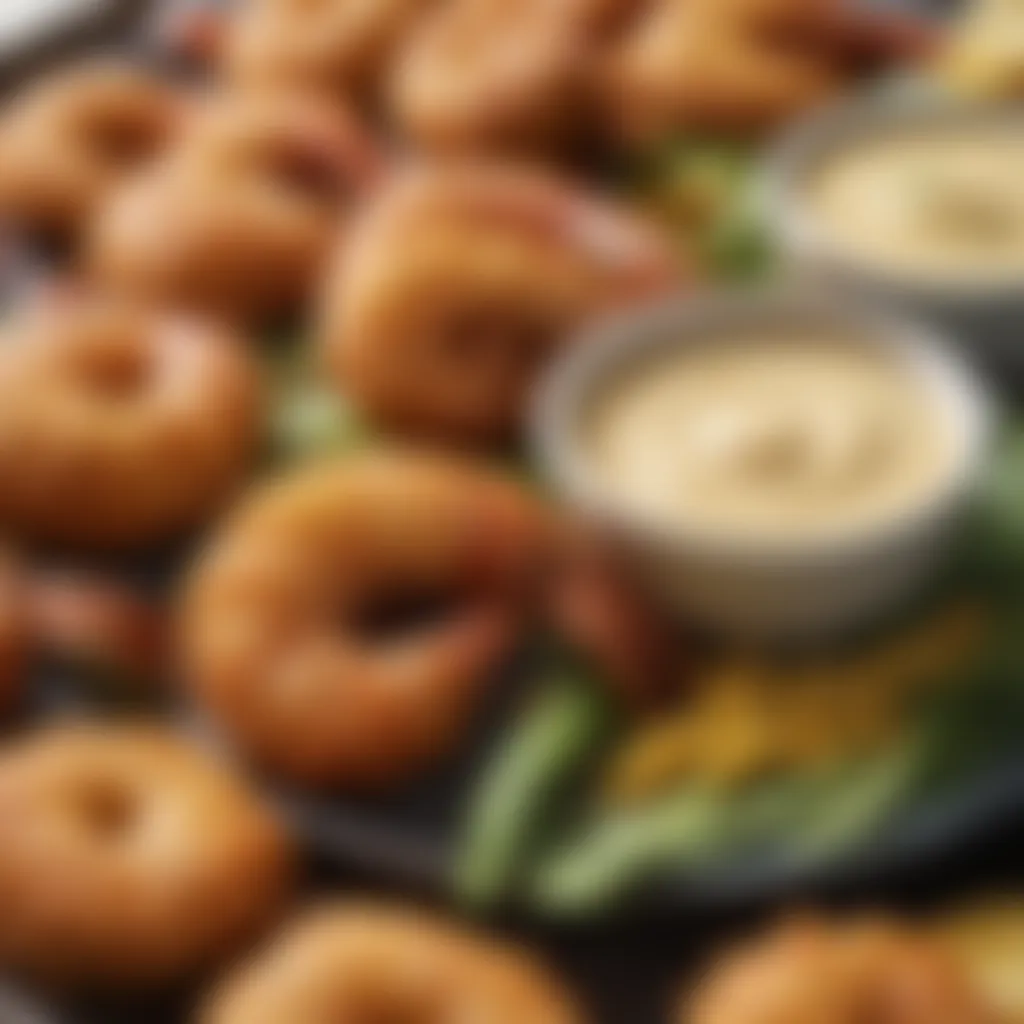
"When flavors dance together, they create a meal that’s more than just sustenance; it’s a celebration on a plate."
The magic of shrimp and corn lies not only in their taste but also in their cultural roots and culinary adaptability. Whether you choose chowder, salad, or tacos, each dish showcases the intriguing possibilities these ingredients hold. Enjoy experimenting with these signature recipes!
Presentation and Pairing
The visual appeal of a dish is nearly as important as its taste. Presentation and pairing can transform a simple shrimp and corn recipe into a feast that captivates the senses. They serve as the bridge between culinary skill and aesthetic pleasure, enhancing the overall dining experience. When plates are beautifully arranged and accompanied by suitable beverages, it draws diners in, creating a memorable atmosphere. This section will explore how thoughtful presentation and well-chosen pairings can elevate even the simplest meals.
Plating Techniques
Color Contrast
Color contrast is a dynamic aspect of plating that plays a vital role in engaging diners. The vibrant yellows of fresh corn can beautifully offset the pinks and oranges of grilled shrimp, creating a tantalizing visual display. This juxtaposition not only attracts the eye but also enhances the perception of flavor. Choosing ingredients with contrasting colors, such as vibrant red tomatoes alongside golden corn, can provide a joyful, fresh pop that says “enjoy me.”
A key characteristic of color contrast is its ability to make a plate feel alive. While the choices are endless, it's wise to consider how layers of colors evoke emotions and experiences. This technique is particularly beneficial in this article's context as it encourages creativity and playfulness in plating. However, one must be careful not to overdo it—too much clutter can lead to a confused visual message.
"Good food is all about color, taste and texture. If you can see it, you'll want to eat it."
Layering and Height
Layering and height add a three-dimensional aspect to plating, imparting elegance and sophistication to the dish. By stacking shrimp and corn chowder components or using a ring mold for salads, one can create an appealing profile that demands attention. This technique's key characteristic is its ability to draw the eye upwards, signifying abundance and creativity. It’s a popular choice here as it allows for texture variation and elevates the dish above mere function into art. Horizontal and vertical layering can incorporate texture, as smooth elements like avocado puree can contrast beautifully with chunky shrimp and corn, providing both visual interest and mouthfeel. An interesting feature about this method is that while height can be striking, it should not compromise structural integrity. A delicate balance must be found to ensure that each bite remains stable yet inviting.
Wine and Beverage Pairings
White Wines
White wines are renowned for their versatility and can enhance the flavors in shrimp and corn dishes. Varieties such as Sauvignon Blanc or Chardonnay complement the delicate sweetness of shrimp while cutting through the richness brought by creamy sauces. The crisp acidity in these wines brightens the overall experience, making every bite feel fresh and rejuvenating. The unique feature of white wines is their ability to bridge flavors without overpowering them. This attribute makes them a beneficial choice for pairing with a range of seasonings, from citrusy dressings to buttery sauces. When temperatures rise, a chilled glass of white wine can refresh your palate, making it an excellent accompaniment to outdoor gatherings or casual dinners.
Craft Beers
Craft beers represent a bold and adventurous choice for those looking to explore unique flavor profiles. With a range that spans from hoppy IPAs to rich stouts, they can complement shrimp and corn recipes in ways traditional wines often can't. The hoppy bitterness of an IPA can balance out sweet corn, while a darker beer can enhance smoky grilled flavors. One prominent aspect of craft beers is their regional variety, allowing for local selections that can bring added significance to a meal. Pairing beer with food can also invite diners into a more relaxed atmosphere, encouraging conversation and exploration. Just be wary that certain beers can overpower delicate seafood flavors, requiring a careful selection to achieve harmony.
In summary, paying attention to presentation and pairing is crucial for transforming shrimp and corn recipes from straightforward meals into gastronomic delights. The balance of colors, layers, and harmonious drink choices can make the dining experience not only pleasing to the palate but also captivating to the eyes.
Health Benefits of Shrimp and Corn
Shrimp and corn, while seemingly simple ingredients, pack quite a punch when it comes to nutritional benefits. This section shines a light on why understanding the health aspects of these components can enhance our culinary experiences, especially for those aiming to maintain a balanced diet without sacrificing flavor. Incorporating shrimp and corn into your meals can lead not only to delightful dishes but also to a healthier lifestyle.
Nutritional Value of Shrimp
Shrimp is often hailed as a goldmine of protein, making it an excellent option for individuals looking to boost their dietary intake without loading up on fat or calories. Consider these points regarding shrimp's nutritional profile:
- High-Quality Protein: A 3-ounce serving of shrimp offers around 20 grams of protein, supporting muscle health and recovery.
- Low in Calories: With only about 84 calories, shrimp is a smart choice for those watching their weight.
- Rich in Nutrients: Shrimp is also a notable source of essential nutrients like vitamin B12, which plays an important role in nerve function and the production of DNA.
- Omega-3 Fatty Acids: Though not as high in omega-3s as fatty fish, shrimp still contributes to heart health by providing a decent amount of these beneficial fats.
Given its low fat content and rich nutrient profile, shrimp can be a fantastic addition to a health-conscious diet. It’s versatile, lending itself to a plethora of cooking methods that further preserves its nutritional integrity.
Nutritional Value of Corn
Corn is often underestimated as a mere side dish, but it holds its own with a variety of essential nutrients. Here’s what makes corn a star in the nutrition department:
- Source of Carbohydrates: Corn provides complex carbohydrates, which are crucial for energy, particularly for active families.
- Fiber-Rich: A medium ear of corn has around 3 grams of dietary fiber. Fiber helps in maintaining digestive health and keeping you satiated.
- Vitamins and Minerals: Corn is a good source of vitamins B6, C, and various minerals. These components support overall health, from boosting immunity to aiding in the formation of red blood cells.
- Antioxidants: Corn contains antioxidants, such as lutein and zeaxanthin, which are known to support eye health.
What's more, the bright color of corn often indicates its nutritional richness. The deeper the hue, usually the more antioxidants it contains.
Incorporating shrimp and corn into your meals not only adds a flavorful aspect but also can enhance the nutritional profile of your dishes. They work together harmoniously, bringing culinary delight and a boost of health benefits. By blending these two ingredients wisely, you can craft meals that are both delectable and reassuringly wholesome.
Frequently Asked Questions
Understanding the common inquiries surrounding shrimp and corn not only expounds culinary wisdom but also nurtures a deeper appreciation for these ingredients. In any kitchen, it's not just about throwing ingredients together; it's about knowing their uniqueness, how they mesh, and their best uses. This section tackles frequently asked questions that aspiring cooks might ponder as they venture into creating delightful shrimp and corn dishes.
Addressing these frequently asked questions is vital for several reasons. It builds confidence for the novice cook, offering insights that can prevent kitchen blunders and enhance culinary results. More so, it helps seasoned chefs think outside the box, encourage experimentation, and refine techniques.
How to choose the best shrimp?
Selecting top-notch shrimp can feel overwhelming, given the variety available in the market. Here are some essential tips to ensure you pick the best shrimp:
- Look for Transparency: Fresh shrimp should have a translucent shell. If it appears cloudy or has spots, it might be old and not as flavorful.
- Check the Odor: Fresh shrimp should smell clean, like the ocean. If it has a strong, fishy odor, put it back.
- Consider Size and Context: Size matters depending on the dish. Smaller shrimp, such as 41/50 count, work great in salads, while larger varieties are better for grilling or shrimp cocktails.
- Frozen vs. Fresh: Sometimes, purchasing frozen shrimp can be more beneficial. Frozen shrimp is often flash-frozen right after harvest, preserving its freshness more effectively than "fresh" shrimp that may have been sitting on ice for days.
- Ask Questions: Don't hesitate to ask your fishmonger about the origin of the shrimp. Wild-caught shrimp from sustainable sources is generally a superior choice.
Can use frozen corn?
Absolutely, frozen corn is a fantastic option and sometimes even preferable to fresh. Here’s why incorporating frozen corn into your recipes is a wise choice:
- Availability: Frozen corn is accessible year-round, making it a convenient option for any dish involving corn. You won't have to wait for summer to enjoy the sweet taste of corn.
- Flavor: Frozen corn is typically picked at peak ripeness and blanched before freezing, which helps lock in its natural sweetness. This often gives it a flavor profile that rivals fresh corn.
- Ease of Use: There's no need for husking or peeling—just pour it into your dish, and it's ready to go! This can save a fair amount of prep time, especially on busy weekdays.
- Nutritional Value: Freezing corn preserves its nutrients quite well. You still gain the health benefits, including fiber, vitamins, and minerals.







